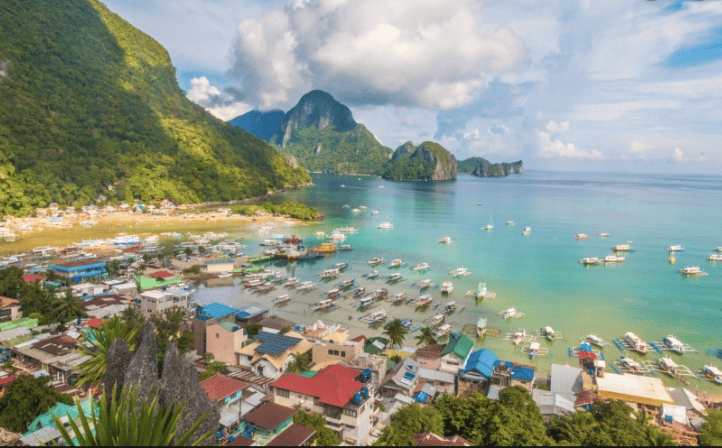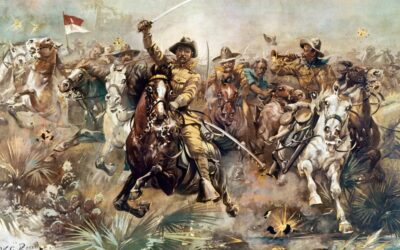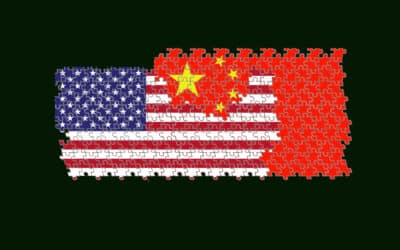Empire of Islands: Geopolitics of the Philippines
by Sal Mayweather | Oct 16, 2019
Empire refers to a grouping of territories under one common authority. Although nowadays it’s more applicable than ever, the term has peculiarly disappeared from the political lexicon. The term connotes romantic images of Rome and Britain at their heights. As the Irish say, the sun never set on the British empire but that’s only because God couldn’t trust the English in the dark. So it goes with all empires…
For all intents and purposes, the Philippines is such an empire – albeit, an empire of islands. Like Rome & Britain, the Filipino state struggles to maintain control of its periphery. From the relief map, we can see the state’s territory extends over three island groups. Luzon in the north, which is mainly Christian and hosts the capital, Manila. The southern island chain, Mindinao is largely Muslim & the two groups spend most of their time vying for control of the central island chain, the Visayas.
Tensions reached a tipping point in 2001 when American tourists were kidnapped from the idyllic province of Palawan (from which I recently returned) by Islamic radicals affiliated with Abu Sayyaf. The subsequent botched rescue is detailed vividly by former US Admiral William McRaven, in his new book,
Sea Stories: My Life in Special Operations. Ironically, I read the book and his frightening account of the events on the flight back from Palawan. Nevertheless, having recently returned, I can attest to the fact that the only terrorists I saw were the US military personnel staying in our hotel in Manila.
The reason US taxpayers are forced to put up US soldiers at 5-star hotels in Manila is the closing of Subic Bay naval station in 1992. At the time, the US and Filipino states couldn’t reach an agreement on the price tag for a lease extension, but given the tension in the South China sea, it’s a safe bet that both parties regret that diplomatic failure. Only two years after US forces departed, China moved into the Spratly islands. One of the locals expressed remorse to me over the closing of Subic Bay, citing the increasing scope of Chinese communism.
Another factor stalling Filipino development is the colonial legacy left by first the Spanish, and later the Americans. Whereas former British colonies retained a legacy of strong institutions which helped foster a degree of stability, the Spanish colonies were burdened by leftover inquisitional-Catholicism.
As James C. Scott details in his book,
Seeing Like A State, spanish colonial authorities imposed on the native Philippine population hispanic surnames in order to standardize taxation and land titling. Names were drawn from a Catalogo Alfabetico de Apellidos, which contained a list of surnames to be distributed based on geographical location. For example, families living in major cities were given surnames beginning with the letter A. Those in secondary cities were given names beginning with B, and coastal communities were given names starting with C. Although this pattern can still be seen in certain provinces, the continued existence of native Philippine surnames suggests the presence of agoristic non-compliance.
As for the legacy of US imperialism, Bob Kaplan sums it up best in his book,
Asia’s Cauldron:
Perhaps no other large country in the world has seen such a political, military, and economic investment by the United States for decades on end. Perhaps nowhere else has it made so little difference.
According to one western economist, “[The Philippines] is still a bad Latin American economy, not an Asian one.” The East Asian economic boom of the 90s was predicated on an export-oriented economic model. Unfortunately, Filipino exports continue to compose only about 30% of GDP – a far cry from the standard Asian model of 75%. Moreover, where other Asian economies have focused on manufacturing, the Philippine economy continues to rely on raw agricultural products like bananas and coconuts.
Despite this, the situation is certainly improving. Downtown Manila is beginning to resemble a tempered version of Manhattan, and one can’t help but notice the increase in foreign investment throughout the country or the entrepreneurial spirit of the locals. If rampant corruption can be brought under control and direct foreign investment continues unimpeded, its a matter of time before this empire of islands becomes a major regional power.
Permission to republish from The New Libertarian.































